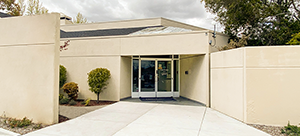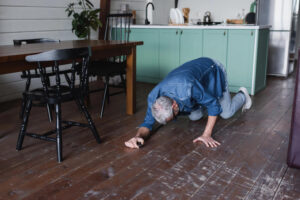When you or a loved one experiences a serious medical event, you will be faced with several decisions about post-hospital care. In the context of health emergencies, these choices can seem overwhelming. Here’s what you need to know about acute rehab and how it differs from skilled nursing care.
Why Do Older Adults Need Acute Rehabilitation?
If you’re caring for an older adult, it’s important to understand what acute rehabilitation is and why someone needs it. Acute rehab is a type of short-term intensive care provided to people who have experienced serious medical events or severe injuries such as:
- Amputation of a limb
- Stroke or traumatic brain injury
- Multiple fractures
- A critical decline due to debilitating disease
- Loss of body function
During acute rehabilitation, you or your loved one will receive different kinds of care daily, from occupational and cognitive therapy to psychological services, respiratory treatments, and more.

What Is the Difference Between Skilled Nursing and Acute Rehab?
Many older adults eventually require extra medical attention, whether because of an injury or ongoing illness, but not every person needs acute rehab. You’re not alone if you or your loved one are confused about the difference between skilled nursing and acute rehab. Patients and their families often find it challenging to navigate the differences in care.
Skilled nursing care is not as intensive as acute rehabilitation. Patients receiving skilled nursing care generally get one to two hours of therapy per day versus three to five hours of treatment and therapy in acute rehab. People who stay in a skilled nursing facility are usually there for around one month compared to the shorter time spent in acute rehab.
In acute rehab settings, doctors are generally available to patients at all times because of the severity of the illness or injury. If your loved one receives skilled nursing care, they may not see a doctor daily, but they will see one at least once or twice a month.
What Is the Average Length of Stay in a Rehab Facility?
Acute rehab for older adults is meant to provide immediate intensive care for a short duration. The average length of stay in a rehab setting is two weeks. In an acute rehab environment, people receiving treatment will have the chance to heal, re-learn critical skills, and regain their ability to be independent. However, not every person will return home after receiving acute rehab care.
What Happens After an Older Adult Finishes Acute Rehab?
Depending on your loved one’s continuing medical needs and health condition after rehab, they may return home or transition to assisted living. If a longer period of treatment and therapy seems likely, your loved one may move into a skilled nursing facility or elder care setting. Every situation is unique, so working with your loved one’s physician and care team is crucial to determine the best path forward.
Choosing Holistic Elder Care for a Brighter Future
All older adults deserve holistic care to experience as much independence as possible within a safe environment. As you navigate the landscape of post-hospital care, consider viewing our premier facilities to discover the difference holistic care can make. Schedule a visit today to learn more.




















